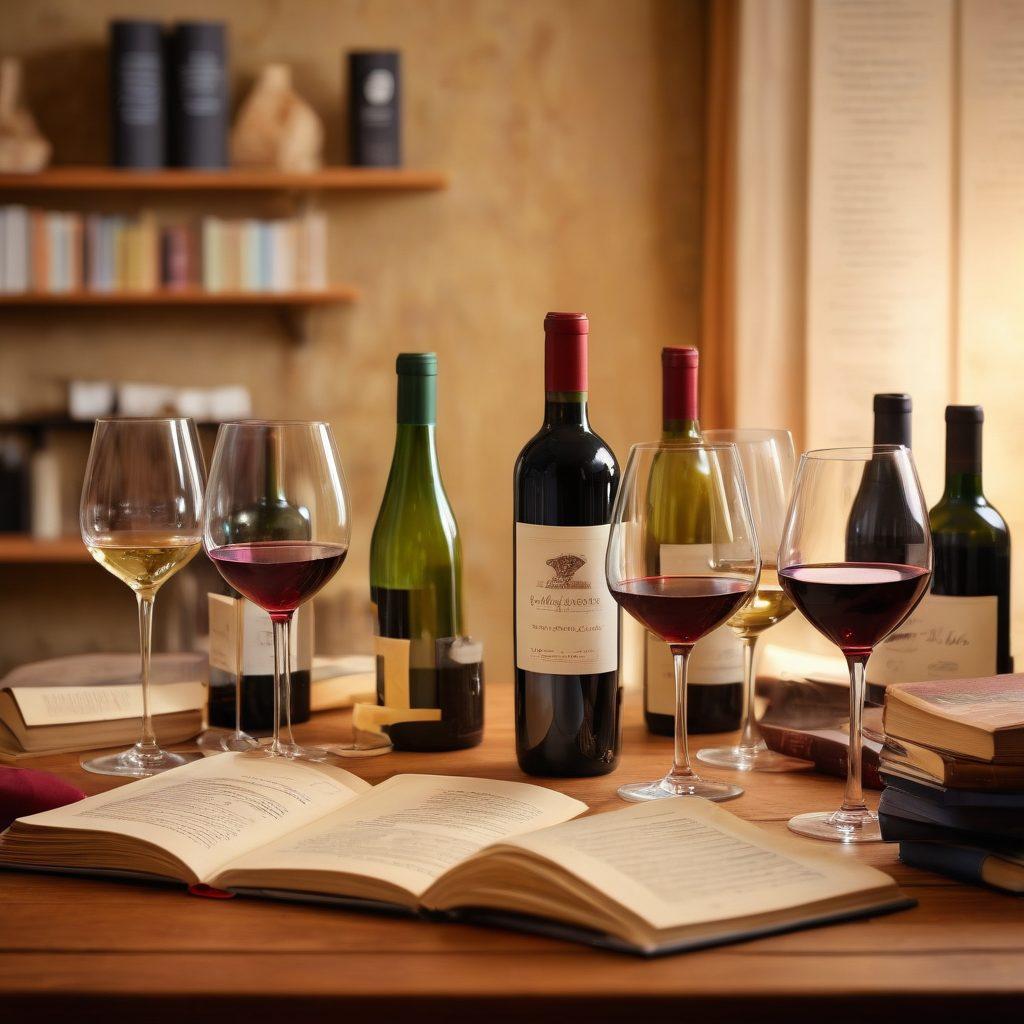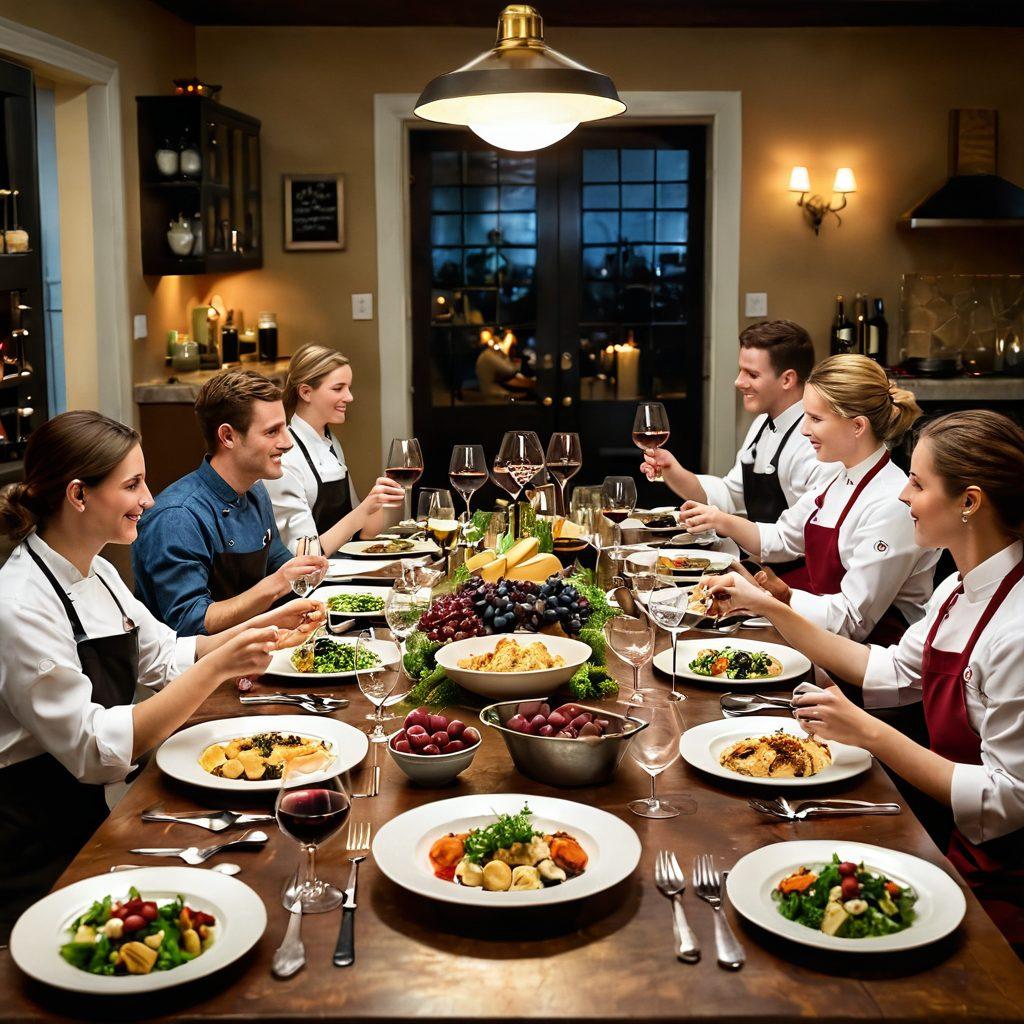Sip, Savor, Celebrate: Unleashing Joyful Wine Experiences in Education
Imagine walking through a sunlit vineyard, the scent of ripening grapes filling the air. You've just finished a wine tasting session, savoring different grape varieties, and now you're buzzing with excitement about the myriad of experiences that wine culture can bring into the realm of education. Exploring the grapevine transcends mere enjoyment; it becomes an avenue for cultivating joyful wine experiences for students and educators alike. In a world where engagement is key, wine appreciation can transform traditional learning into a fun adventure, enriching culinary programs and school celebrations. So, how do we bridge the gap between wine culture and education?
Picture this: a group of students gathered after class, not for tedious homework, but to participate in a lively wine workshop. They're not just mingling; they’re learning about wine pairings, sommelier education, and the artistry behind folding flavors into everyday meals. With laughter echoing around them, these sessions elevate their understanding of food and drink like never before. This isn’t just fun; it’s a masterpiece of student engagement, where classroom activities bleed into real-life experiences, nurturing a robust wine community. Isn't it fascinating how education can be as invigorating as it is informative?
Wine events are not reserved for adults at upscale restaurants; they can spark creativity in the classroom as well. Imagine hosting a happy hour event with educators, where they sample various wines while brainstorming innovative culinary curricula. Such gatherings can build camaraderie and open doors to partnerships with local vineyards. By collaborating with these vineyards for vineyard tours, students can experience firsthand the magic of winemaking, deepening their appreciation for the art, science, and culture embedded in each bottle. What if every school celebrated learning with wine-inspired festivities?
The journey doesn’t end there. Wine culture offers a wealth of learning resources that educators can readily tap into. Interactive workshops specializing in different grape varieties or wine regions can empower students to engage deeply with the material. Think about it: students could present their findings about a specific region’s wines, akin to a science fair but immersed in analysis of terroir and vinification processes! Students might think these projects are just assignments, but with a sprinkle of creativity and passion, they transform into memorable experiences. Isn’t it wonderful how a lesson can evolve into a festival of knowledge?
As the seasons change and wine events fill the calendar, the opportunity to bring together the beauty of wine and education has never been more promising. Let’s create spaces where students discover the joy in learning through wine culture, illuminating their minds while they savor the present moment. Whether it's a casual class gathering or a significant school celebration, integrating wine appreciation into education invites a vibrant narrative that captivates the imagination. Ultimately, it’s about making learning enjoyable and relevant. How will you explore the grapevine in your educational journey?
From the Classroom to the Vineyard: Engaging Students with Joyful Wine Experiences
Wine has a way of weaving itself into the fabric of our lives, transforming mundane moments into joyful celebrations. Imagine a classroom buzzing with excitement as students immerse themselves in the culture of wine appreciation. How can we harness this passion and integrate joyful wine experiences into education? From culinary programs to vineyard tours, the world of wine offers vibrant opportunities that not only engage students but also enrich their understanding of grape varieties and wine pairings. Let's dive into how we can create an exceptional learning environment that resonates with future sommeliers and wine enthusiasts alike.
Incorporating wine culture into educational settings can be a game-changer for student engagement. Picture this: a lesson plan that incorporates wine workshops where students learn about the history and artistry behind their favorite wines. By tying in concepts of chemistry, geography, and even economics, educators can provide a multi-faceted learning experience. This kind of interdisciplinary approach not only captivates students' interests but also connects them with real-world applications of what may have previously felt like abstract theories. After all, who wouldn’t be more eager to learn about soil types or fermentation processes when they know it’s directly related to the delicious glass of wine they might one day serve?
One effective way to host joyful wine experiences in schools is through collaborative events like happy hour gatherings or wine events that celebrate local vineyards. These school celebrations can come alive by inviting the community into the experience, making it a communal celebration of learning. What if we hosted a ‘Wine and Cheese Education Night’ where local sommeliers partner with culinary students? Not only would this foster a sense of belonging, but it would also create treasured memories that students carry with them long after the last sip. Inviting guest speakers who are passionate about wine adds another layer of engagement, illustrating the many career paths in the wine community awaiting these young minds.
Vineyard tours should also be an essential component of any wine appreciation program. Imagine students stepping off the bus, the sun kissing their skin, as they’re met with sprawling vineyards and the intoxicating scent of ripening grapes. This immersive experience can be the highlight of their educational journey. As students connect with the land, they gain a tangible understanding of where wine begins. Questions like ‘How does terroir impact flavor?’ and ‘What’s the difference between red and white grape varieties?’ can ignite compelling discussions that inspire curiosity and cooperation among peers. Each grape harvested carries a story - could it be their story too?
Finally, harnessing innovative learning resources in the form of interactive classroom activities can create lasting educational impacts. Implementing projects that require students to research different grape varieties, create their own wine labels or even develop unique wine pairings can promote teamwork and creativity. This can culminate in an end-of-semester ‘Wine Expo’ where students showcase their work, celebrating both their educational journey and the friendships forged along the way. With the right structure, we can make wine appreciation more than a subject; we can make it an unforgettable experience that students cherish and carry with them throughout their lives. So, how will you incorporate joyful wine experiences in your educational endeavors?
Cheers to Learning: Integrating Wine Appreciation into Culinary Programs and School Celebrations
The clinking of glasses, the swirling of different hues, and the distinct aroma of each sip—wine is more than just a beverage; it's an experience that can ignite conversations and inspire learning. Imagine a classroom where 'happy hour events' don’t just signify relaxation, but also a celebration of knowledge through 'wine appreciation.' As culinary programs begin to embrace the elegance of wine culture, we find ourselves on a vibrant journey toward deeper student engagement and unforgettable school celebrations. How can we cultivate a learning environment that marries education with the joy of wine? Let's raise our glasses to that!
Integrating wine appreciation into culinary programs is an exciting and thoughtful approach to education. It's about empowering students with an understanding of various 'grape varieties,' and equipping them with skills that transcend the kitchen. Imagine students not just learning how to cook but also discovering the art of 'wine pairings.' Picture a classroom activity where students not only prepare a course but also select the ideal wine to complement their culinary creation. This fosters a comprehensive understanding of gastronomy, where each meal is a multi-sensory experience. Isn’t that a delicious prospect?
But wait, is wine appreciation solely reserved for culinary students? Absolutely not! Schools can create 'wine workshops' and 'wine events' tailored for various age groups, with a focus on responsible enjoyment and cultural appreciation. These events can transform how students perceive beverages, steering them towards an informed appreciation of flavors, aromas, and regions. For instance, organizing 'vineyard tours' provides students with firsthand experience of the winemaking process, making lessons come alive. Who wouldn’t want to learn about fermentation while standing amidst lush grapevines?
Moreover, 'sommelier education' can be an exciting branch of learning within a culinary program. Students can dive into the nuances of tasting, serving, and describing wines much like they would with food. This not only enhances their culinary repertoire but also nurtures a wine community where knowledge is shared, and friendships are forged. How inspiring it would be for students to discuss the virtues of a cabernet versus a merlot during group discussions! This engagement with wine culture adds layers to their education and invites them to explore potential career paths in the hospitality industry.
So, as we gather to 'sip' and 'savor,' let’s not forget the importance of incorporating wine appreciation into our educational ethos. It’s through storytelling, exploration, and celebration that we can truly connect with one another. By integrating this element into culinary programs and school celebrations, we are not merely enhancing knowledge but also creating memories that last a lifetime. Are you ready to toast to new learning adventures? Here’s to joyful wine experiences that transcend the classroom!


